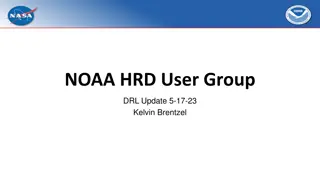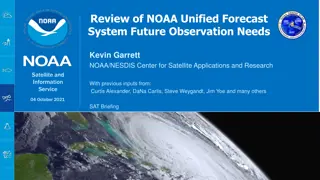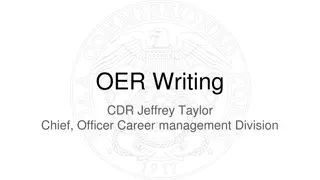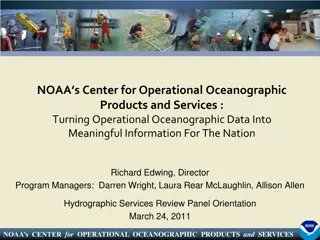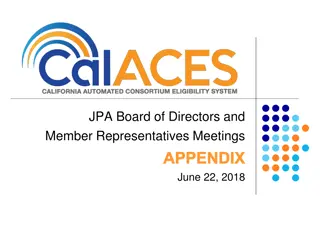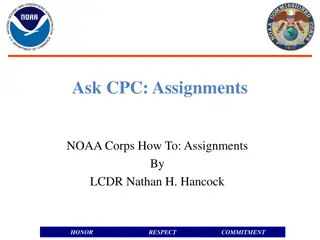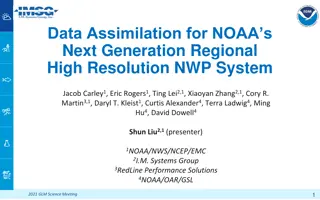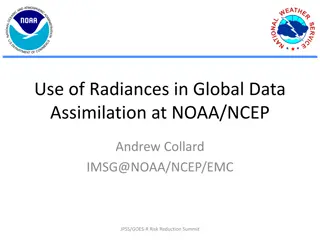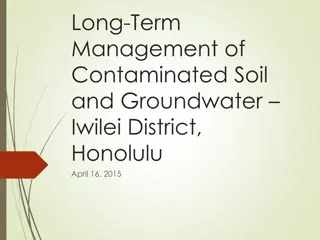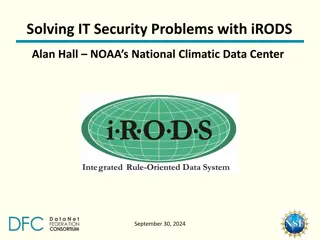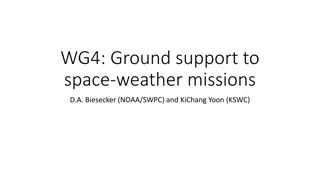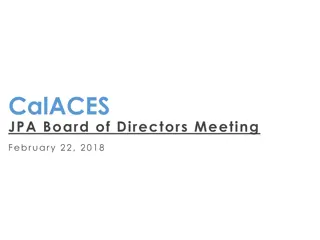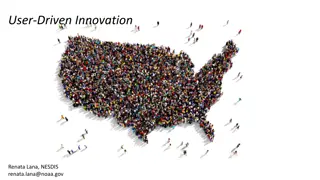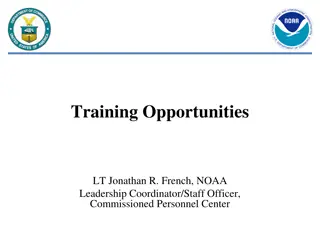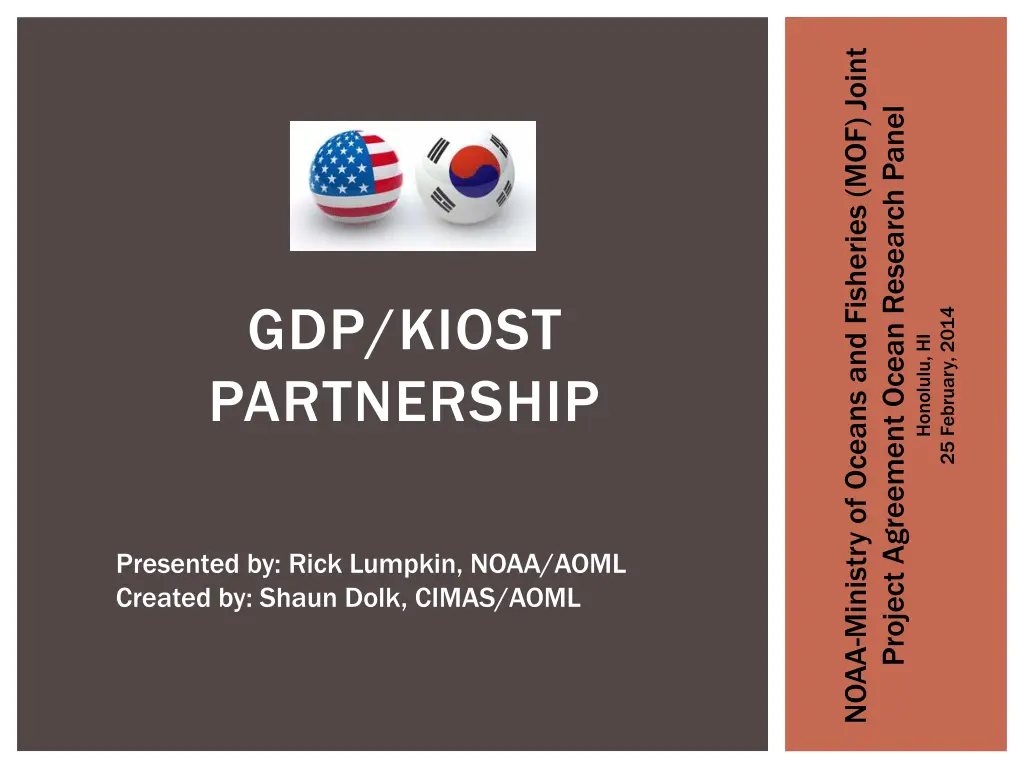
Global Drifter Program: Advancing Ocean Research Partnerships
Explore the NOAA-Ministry of Oceans and Fisheries joint project agreement on ocean research through the Global Drifter Program (GDP). Learn about drifter technology, goals, successful partnerships, and the vital role of international collaborators in enhancing global ocean observations and climate monitoring.
Uploaded on | 0 Views
Download Presentation

Please find below an Image/Link to download the presentation.
The content on the website is provided AS IS for your information and personal use only. It may not be sold, licensed, or shared on other websites without obtaining consent from the author. If you encounter any issues during the download, it is possible that the publisher has removed the file from their server.
You are allowed to download the files provided on this website for personal or commercial use, subject to the condition that they are used lawfully. All files are the property of their respective owners.
The content on the website is provided AS IS for your information and personal use only. It may not be sold, licensed, or shared on other websites without obtaining consent from the author.
E N D
Presentation Transcript
NOAA-Ministry of Oceans and Fisheries (MOF) Joint Project Agreement Ocean Research Panel GDP/KIOST PARTNERSHIP 25 February, 2014 Honolulu, HI Presented by: Rick Lumpkin, NOAA/AOML Created by: Shaun Dolk, CIMAS/AOML
OUTLINE What is a Drifter? Global Drifter Program (GDP) Goals GDP Partnerships GDP/Korean Collaborative Evolution Increased Communication and Collaborative Efforts POSEIDON Deployments Equatorial Pacific R/V ARAON Deployments Southern Ocean Future Plans
GDP DRIFTER Surface Float -expected life: 450 days D-Cell Battery Packs (4-5) Satellite Transmitter Sea Surface Temperature Sensor Drogue (sea-anchor) -expected life: 300 days Tether Strain Sensor Drogue Detection Cost: ~$1700 Additional Sensors Can Be Added Barometer Sensor Salinity Sensor Wind Sensor Speed and Direction
GDP GOALS AND OBJECTIVES The GDP is the principal component of the Global Surface Drifting Buoy Array, a branch of NOAA s Global Ocean Observing System (GOOS) and Global Climate Observing System (GCOS) and a scientific project of the DBCP. Objectives: Maintain Maintain a global 5 x5 array of 1250 satellite-tracked Lagrangian surface drifting buoys to meet the need for an accurate and globally dense set of in-situ observations: mixed layer currents, SST, atmospheric pressure, winds, and salinity. Provide Provide data processing system for scientific use of these data. Drifter data support short-term (seasonal-to-interannual) climate predictions as well as climate research and monitoring.
SUCCESSFUL GDP PARTNERSHIPS Based on the nature of the drifting buoy, continuous deployments and strategic reseeding is imperative. In order to achieve adequate coverage (5 x 5 array of 1250 drifters), frequently repeated, routine deployment opportunities are needed. Vested Vested International Collaborators International Collaborators are agencies that either purchase drifters, or upgrade GDP drifters with additional sensors. International Collaborators International Collaborators include partners who regularly deploy drifters on behalf of the GDP. Though these collaborators do not purchase drifters, they are of great importance in seeding regions otherwise inaccessible. Domestic Domestic Collaborators Collaborators conduct research using drifters and assist in the deployment of GDP drifters. GDP Affiliates GDP Affiliates include NOAA employees and NOAA contractors.
SUCCESSFUL GDP PARTNERSHIPS Vested International Collaborator (purchase and/or upgrade drifters) Global Drifter Program (GDP) International Collaborator GDP Affiliates US Collaborator
COLLABORATION MATURATION 1st Coastal and Ocean Observation Panel Meeting Jeju, Korea 11-12 October, 2007 Addressed: Missing Deployment Reports Data Formatting Issues Communication Concerns 2nd Coastal and Ocean Observation Panel Meeting Miami, Florida 22-23 April, 2009 Addressed: Communication Concerns Established Agency Contacts within KIOST Mutual Benefits Using Drifter Deployments 3rd Seminar on Ocean Climate Collaboration Seattle, Washington 15-16 April, 2013 Addressed: Accomplishments Achieved Desire to Continue Collaborative Efforts Possible Expansion of Current Parameters 4th Joint Project Agreement Ocean Research Panel Honolulu, Hawaii 25 February, 2014 Address: Successful Deployments from R/V ARAON Desire to Continue Collaborative Efforts Possible Expansion of Collaboration into Arctic/Antarctic Regions Work with KIOST Scientists at NOAA/AOML on Drifter-Related Research
COLLABORATIVE ACHIEVEMENTS Annual POSEIDON Cruise 2009 8 Drifter Deployments 2010 20 Drifter Deployments 2011 0 Drifter deployments Shipping Constraints 2012 19 Drifter Deployments 2013 0 Drifter Deployments Drifter Inventory Shortage 2014 (planned) 20 Drifter Deployments Total: 47 SVP Drifters Deployed
COLLABORATIVE ACHIEVEMENTS (CONT.) Southern Ocean Deployments 2013 30 Drifters Deployments 2014 (planned) 30 Drifters Deployments Total: 30 SVPB Drifters Deployed
R/V ARAON DEPLOYMENT IMPACTS Southern Ocean Deployment Limitations Limited Container Ship Traffic Few Scientific Cruises Seasonal Opportunities Storage Constraints Logistic Requirements ACC Assistance Required
FUTURE PLANS Current collaboration between the GDP and KIOST is a success THANK YOU DR. JEON and DR. LEE!!! THANK YOU DR. JEON and DR. LEE!!! Continue Collaborating in the Western Equatorial Pacific Ocean Increase the deployment plan to incorporate an additional 10 drifters (30 GDP drifters in total) Continue Collaborating in the Southern Ocean GDP and KIOST desire to expand the current collaboration to include additional deployment opportunities of mutual interest: Arctic Ocean Including the Bering Sea Indian Ocean GDP and KIOST desire to work together on drifter-related research.

